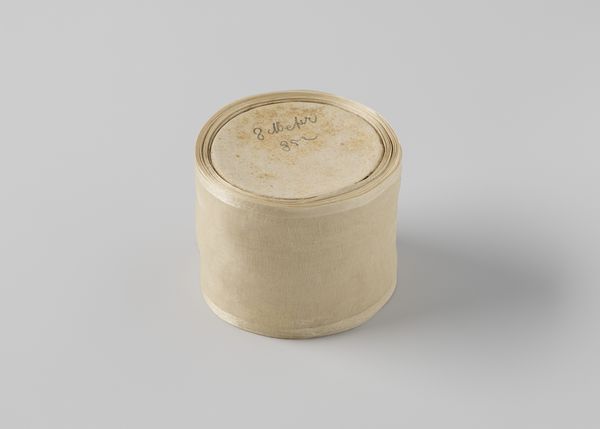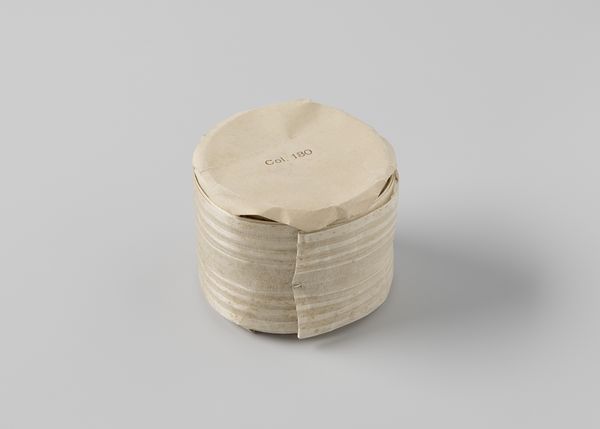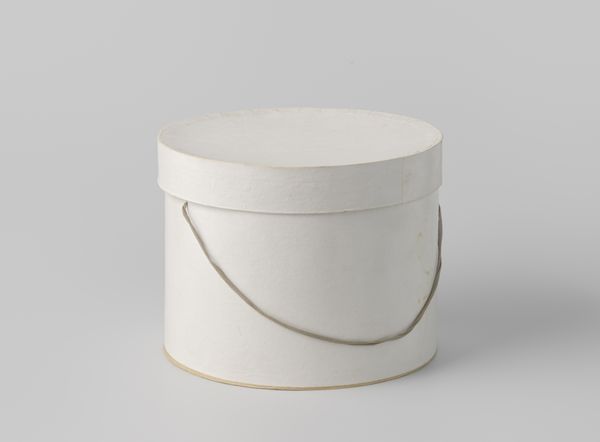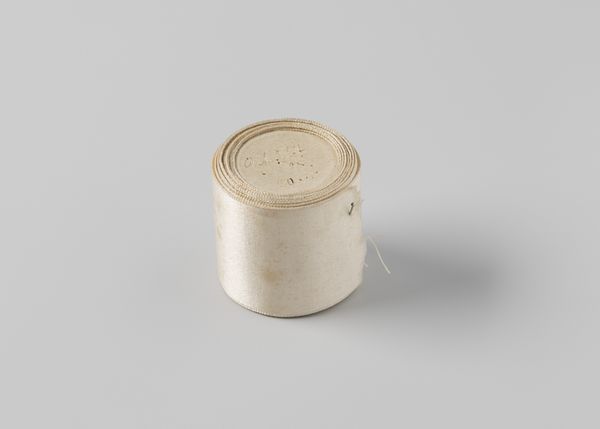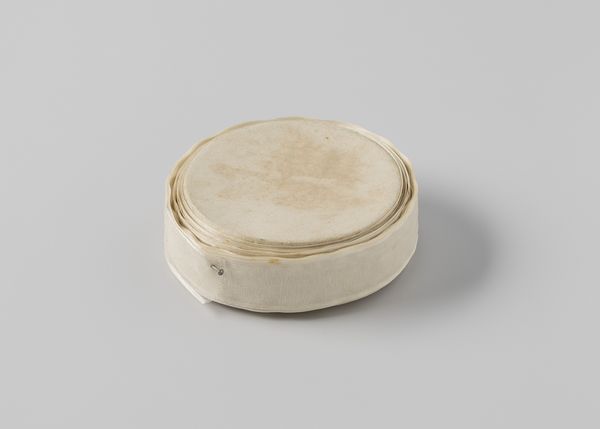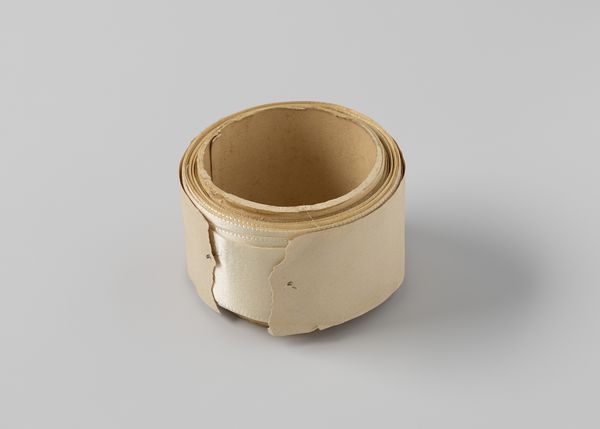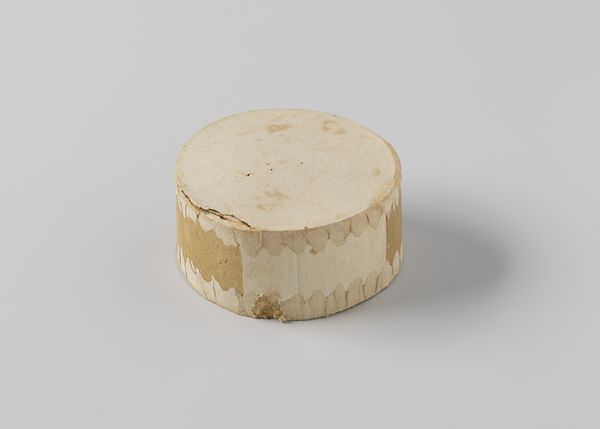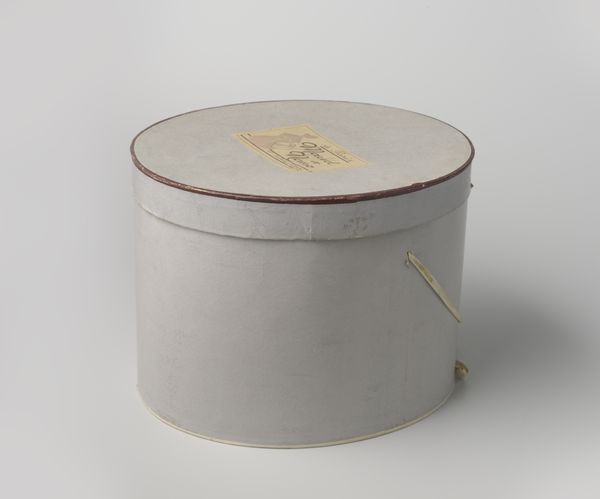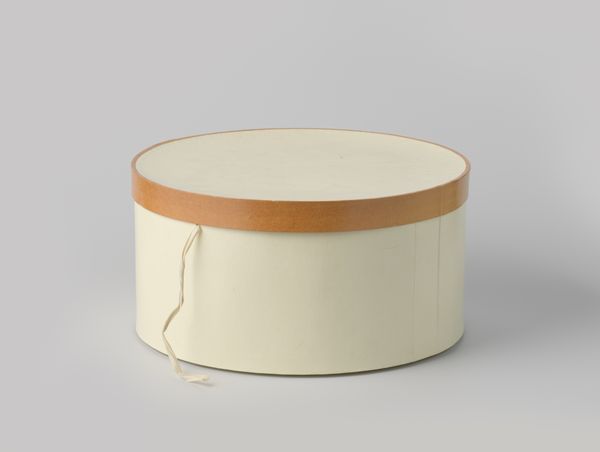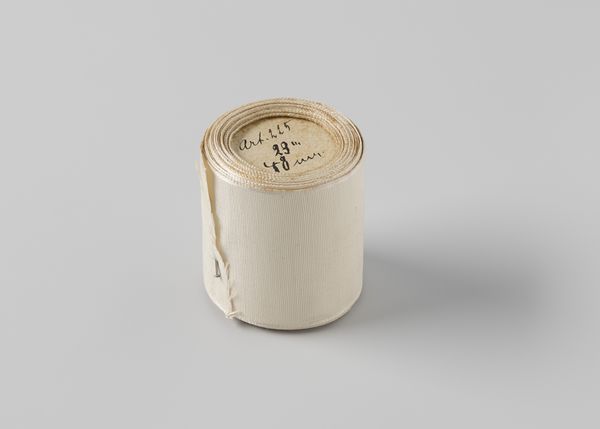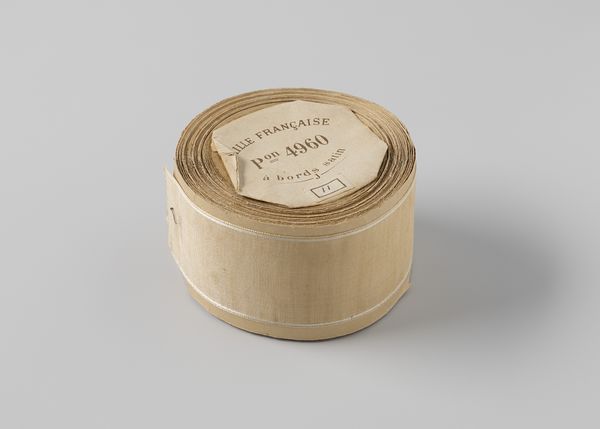
photography
#
studio photography
#
product shot
#
still-life-photography
#
retro 'vintage design
#
photography
#
product design photgrpaphy
#
prop product design
#
decorative-art
Dimensions: height 15 cm, width 29 cm, depth 25 cm
Copyright: Rijks Museum: Open Domain
Editor: We’re looking at a photograph titled "Ovale hoedendoos van karton, bekleed met beige ripspapier" – that’s "Oval hat box made of cardboard, covered with beige rep paper"— dating roughly from 1934 to 1960, likely the work of the milliner Caroline Reboux, based on its association. The composition, particularly its simple geometry and neutral tone, evokes a sense of quiet elegance, almost austere. How do you interpret this work? Curator: This piece is captivating in its austerity, wouldn’t you agree? Stripped down to essential forms – the oval, the cylinder – the photograph focuses our attention on the subtle variations in texture and tone. The beige paper covering, described as "ripspapier," possesses a certain tactile quality, especially as captured by the camera. Notice how the light interacts with the slightly distressed surface; there is a tension created between the object's intended purpose and its state of being displayed here. What sort of semiotic observations can you draw from the box's closure? Editor: You mean the simple string closure on the box? Perhaps the raw string introduces a casual element into what is otherwise an exercise in very constrained shapes. What are your thoughts on this deliberate roughness in the composition? Curator: Precisely! The coarseness serves as a counterpoint, a disruption of the otherwise seamless visual experience. It speaks to the object's real-world functionality, a grounding element that prevents it from becoming purely abstract. Furthermore, it creates depth and reinforces the piece's formalism through texture juxtaposition. We could argue the box itself is merely a three-dimensional canvas for the play of light and texture. It compels us to dissect the relationship between form and utility. Editor: I hadn't considered that perspective. It is amazing how close formal observation reveals hidden intricacies. Curator: Indeed! And that is why looking deeply can be its own reward.
Comments
No comments
Be the first to comment and join the conversation on the ultimate creative platform.
